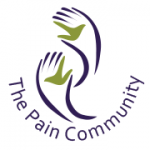Home Page › Forums › Treatment Options for Pain › Pain 101
- This topic has 0 replies, 1 voice, and was last updated 2 years, 2 months ago by
 TPC_YaYa.
TPC_YaYa.
-
AuthorPosts
-
-
May 25, 2022 at 12:26 pm #440055
 TPC_YaYaModerator
TPC_YaYaModeratorPain 101
“There is no one who loves pain itself, who seeks after it and wants to have it, simply because it is pain.”
Fact or Fiction:Pain is just a symptom: False
Pain is meant to “build character”: False
Pain is complex and a subjective experience: True
The experience of pain is unique to every individual: True
Pain is common to most people: True
Pain is a result of your past mistakes or a punishment for wrong doing: False
Pain remains mysterious and requires more study: True
Pain is the most frequent problem reported during hospital admissions: True
There is a significant under-reporting and under-treatment of pain in minorities, women, children, and elderly: True
Those diagnosed with terminal illness have reported that severe and unbearable pain is feared more than death: True
Pain affects all aspects of a person’s life—including those around them: True; see chart
Chart – Pain 101
Source: modified from AGS Panel on Persistent Pain in Older Persons. J Am Geriatr Soc. 2002;50(6 Suppl):S205-S224.Pain Definitions:
Scientific Definition: An unpleasant sensory and emotional experience associated with actual or potential tissue damage, or described in terms of such damage. [International Association for the Study of Pain (IASP); 1986]
Clinical Definition: An uncomfortable sensation that bothers or upsets the person. “Pain is whatever the person says it is, occurring whenever the person says it hurts.” [Margo McCaffrey, RN, MS, FAAN; 1967]
Types of Pain:
AcuteChronic (Persistent) PainBreakthrough Pain (BTP)Pain Flare
Nature’s “red flag,” acute pain tells us that something is wrong from a disease or injury.Cause: Generally known or quickly discovered. Common causes of acute pain: accidently injury or trauma, surgery, infection or inflammation.
Duration: Short-term, eases as healing takes place following correction of cause; usual course of pain is one to two weeks to less than three months.
Treatment: Focused on correcting the cause (example surgery or repair of injury); pain care should consist of variety of treatment options (medication and non-medication based) that are slowly reduced over time as pain lessens. More intense pain relief is often required for the first 48-72 hours depending on extent of injury or correction of disease.
Failure or Delayed Treatment: Uncontrolled acute pain can lead to the development of continued pain [chronic pain syndromes].
When pain is uncontrolled, spontaneous impulses may arise from the nervous system, creating central sensitization;
Hospitalized, seriously ill patients with high levels of pain are at risk for continuous pain for up to 6 months after discharge (St. Marie, ASPMN Core Curriculum, 2002)
-
-
AuthorPosts
- You must be logged in to reply to this topic.
